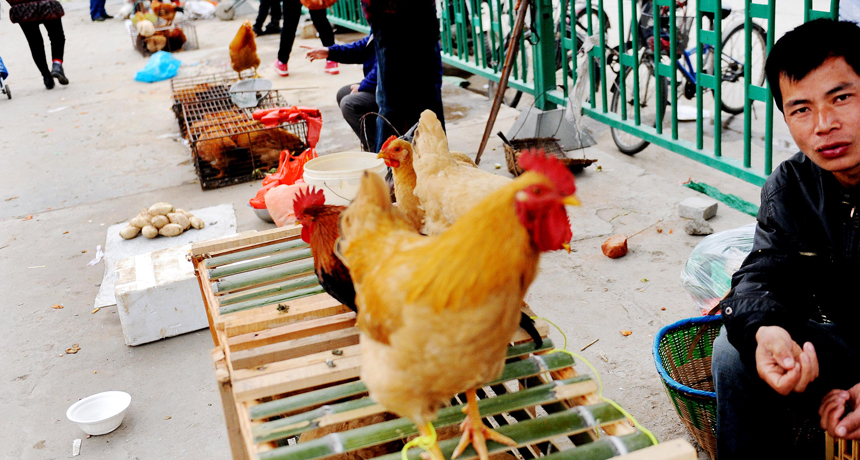Chickens to blame for spread of latest deadly bird flu
It’s only a matter of time before H7N9 virus spreads beyond China, researchers warn

GOING VIRAL Chickens, like the one shown for sale at a market in China’s Jiangxi province in January 2014, sparked a second wave of the H7N9 bird flu last year, a new study concludes.
Zhuo zhongwei – Imaginechina/Associated Press






